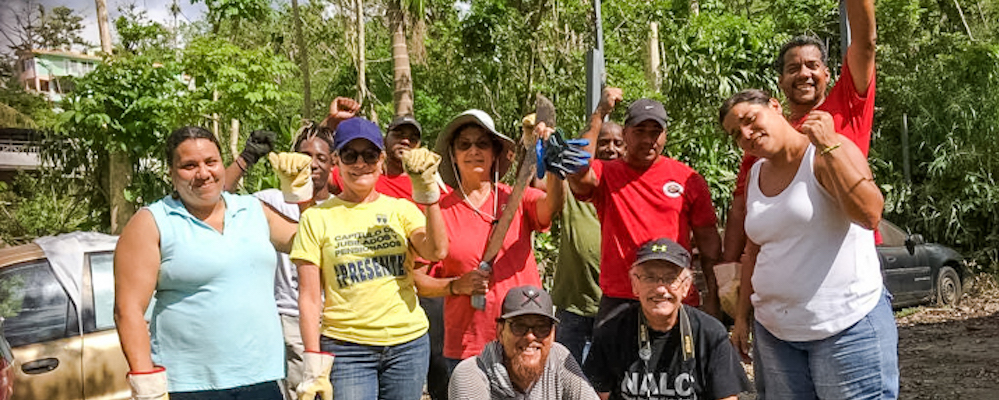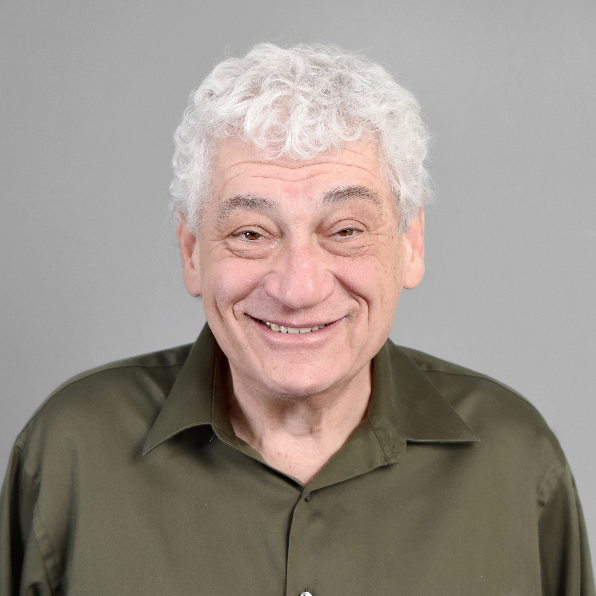 Residents and volunteers worked to clear debris and help restore services in the community after Hurricanes Maria and Irma struck Puerto Rico. ©Joe Piette, 2017.
Residents and volunteers worked to clear debris and help restore services in the community after Hurricanes Maria and Irma struck Puerto Rico. ©Joe Piette, 2017.
By Anais Delilah Roque, David Pijawka, and Amber Wutich
Puerto Rico’s long history of socio-economic and political challenges meant that when Hurricane Maria battered the archipelago in 2017, communities had to rely heavily on neighbors and civil society organizations to deliver effective disaster response and recovery. During this process, elements of social capital—shared values, collaboration capacity, and community organization—became points of reference that community members could use to gather and organize themselves.
In the wake of this humanitarian crisis, communities with established community organizations—such as the two we studied—can provide a perspective on community resilience that others can learn from. These communities, Corcovada and Mariana, had faced stressors (such as water insecurity) before Hurricane Maria and worked to organize community members to improve their well-being. After the hurricane, with their physical infrastructure severely affected, these organizations were invaluable in extending pre-existing networks and forging new networks to allow them to respond and recover, as well as build resilience to future disasters. Based on what we learned from community leaders' experiences, our work suggests putting a stronger emphasis on social capital could enhance disaster response.
Using Social Capital to Support Disaster Resiliency
Our research focused on three domains of social capital—bonding, bridging, and linking social capital—to evaluate the two communities’ organizational capacity, frontline leadership, emergency management performance, and collaborations. Bonding social capital is characterized by strong ties and assistance between group members who share similar characteristics, such as culture, ethnicity, or identity. Bridging social capital refers to accessing resources and connecting different groups with a common goal. Linking social capital allows communities to access resources from institutions of power, such as the government or non-local donations.
Our findings showed that all three dimensions of social capital were important for response and recovery efforts, although their usefulness might vary based on the stage of recovery. For example, in the early stages bonding social capital was key to gathering household resources (such as chainsaws and trucks) that allowed community members to act as first responders before formal emergency assistance arrived. Bridging social capital allowed nearby communities to bring in non-perishable items and water to affected families. After the initial response, though, linking social capital—connections with powerful institutions—was the most valuable in supporting resiliency, especially for future events. It helped facilitate donations (such as water tanks and solar panels) and brought outside volunteers in both communities. In Corcovada, linking social capital enabled community leaders to implement a battery system for their community aqueduct, so they didn’t have to rely on gasoline and support water security. In Mariana, linking social capital helped leaders modify an abandoned school into a center that the community uses for multiple purposes, including as a place to shelter in extreme weather events. In this sense, the three dimensions of social capital addressed specific needs that enhanced overall disaster resiliency at multiple stages.
Key Lessons from Community Leader Perspectives
As part of our study, semi-structured interviews were conducted with 13 community leaders from Corcovada and Mariana about their experiences during and after Hurricane Maria. Both communities had strong, well-established organizations that had supported residents for as many as 30 years, so their viewpoints provided a range of knowledge. From these interviews and participant observation, we learned that:
Community-based organizations can serve as institutions where social capital is fostered, used, and strengthened in times of stress;
Pre-disaster social organization, community planning, and interactions add significant resiliency after a disaster, especially in the ability to organize community members to take action;
Faith-based organizations and the university can play significant roles in connecting communities with larger organizations to provide assistance and collaborative capacity; and
Social capital can provide disaster resilience if used purposefully for such outcomes.
Cities or municipalities can foster the dimensions of social capital to become more resilient. Bonding social capital can be developed by incentivizing gatherings where community members can meet each other and connect. These can be virtual or in-person events and might feature activities that motivate individuals to interact with fellow community members. Such events could become spaces where participants and experts on resilience can evaluate their community’s strengths, weaknesses, and collaborative capacities to develop a plan of action. Bridging social capital will grow as recognized community representatives and city officials work to identify key people, organizations, or resources (physical and social) nearby that support the collective goal of achieving resiliency. Linking social capital will be useful as the communities get more organized and develop specific funding targets to support their collective objectives.
Puerto Rico’s compounded challenges throughout its history have taught communities to organize and learn from multiple shocks. This prevailing resilience can perhaps offer a glimpse of how other communities can face complex challenges by giving us the opportunity to reflect on the role social capital can play in disaster resilience. As they may put it, ¡En la unidad esta la fuerza! Unity is strength!

Anaís Delilah Roque is an environmental social scientist and anthropologist that studies resource insecurity and health in the Anthropocene. Currently, her research agenda is interested at how households and communities experience, prepare for and respond to food, energy, and water insecurity in the wake of a hazard (e.g., geophysical, climatological) or disaster. Roque is part of several interdisciplinary and transdisciplinary teams that advance research at the intersections of environmental behaviors, community resilience, social vulnerability, climate equity and justice, and community-based collaboration. She conducts research in Puerto Rico, Phoenix (Arizona), and the U.S. Mexico Borderlands.